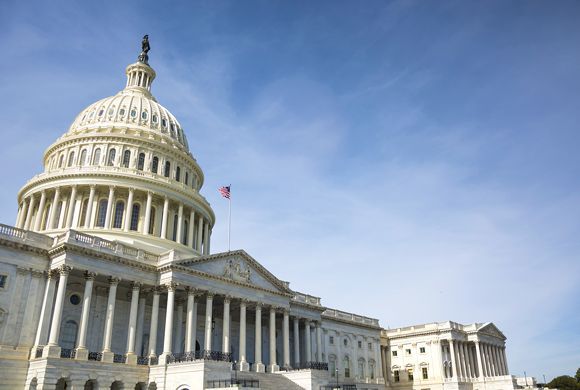About $13 billion is earmarked for programs to benefit agriculture in the COVID-19 relief and government funding package that Congress approved and then-President Donald Trump signed in late December.
The $900 billion measure includes COVID-19 relief, including payments of $600 per person to most households, as well as other routine federal spending.
Some of the funding outlined in the bill would be directed towards helping farmers who were left out of previous federal aid programs, including producers who were forced to euthanize livestock amid food supply chain disruptions during the early part of the pandemic. The measure also includes additional support for dairy and both specialty and non-specialty crop growers.
“We’re pleased that Congress understands the toll the pandemic continues to take on farmers, ranchers and rural Americans,” said American Farm Bureau President Zippy Duvall. “Farmers who were left out of previous aid packages or whose losses were far more devastating than recognized in initial aid are grateful that their families will be helped, too.”
A few highlights of direct aid to agriculture outlined in the legislation include:
- Establishing a new, $400 million dairy donation program and supplemental payments for dairy producers with less than 5 million pounds in annual production.
- Reimbursing producers 80 percent for losses due to premature euthanization or canceled orders.
- Providing a supplemental payment of $20 per planted acre for non-specialty crops and allowing specialty crop producers to increase support through CFAP 2 by including crop insurance indemnities and disaster payments in their 2019 sales or substituting 2018 sales.
In addition, the measure earmarks additional funding for expanding access to broadband internet and telemedicine in underserved areas and gives USDA flexibility to deliver additional support to timber harvesters and haulers, biofuels producers, and dairy, specialty crop and livestock producers who were not adequately covered by previous aid programs. Among other agriculture-related measures, the bill also supports agriculture research, initiatives combating farm stress, animal disease prevention and response, and efforts to expand meat and poultry processing.
Loan Program Expanded, Overhauled
The bill also provides an additional $284 billion for a second round of the Small Business Administration’s Paycheck Protection Program. The program provides forgivable loans for businesses, including farms, to continue to pay employees as they navigate the challenges of the COVID-19 pandemic.
Farm Bureau advocated for additional funding for the program as well as other improvements that were also incorporated into the legislation. Those include:
- Clarifying that allowable expenses paid with PPP loans are tax-deductible businesses expenses.
- Enabling more farms to participate by expanding the program to businesses that show a 25 percent loss between comparable quarters in 2019 and 2020. Previously, businesses needed to show a 50 percent loss, which excluded many farms that experienced losses in 2019.
- Allowing PPP loans to be used for personal protective equipment and other expenses related to improving safety and protecting workers from COVID-19.
- Allowing farms that file as sole proprietors to calculate loan amounts based on gross income, rather than net farm income. This was needed because many such farms that reported losses prior to the pandemic were ineligible.
Tax Provisions Included
The spending package also extended or made permanent several expiring tax provisions supported by Farm Bureau.
Those provisions made permanent by the legislation include:
- Tax credit that supports maintenance of short-line railroads that serve rural areas.
- Reduction in excise taxes paid by craft beer, wine and distilled spirits producers.
- Income tax deduction for medical expenses.
Several energy-related tax provisions supported by Farm Bureau were extended until the end of 2021. Those include tax credits for renewable energy production, including wind and solar, second-generation biofuel production, alternative fuels and alternative fuel vehicle refueling property.

